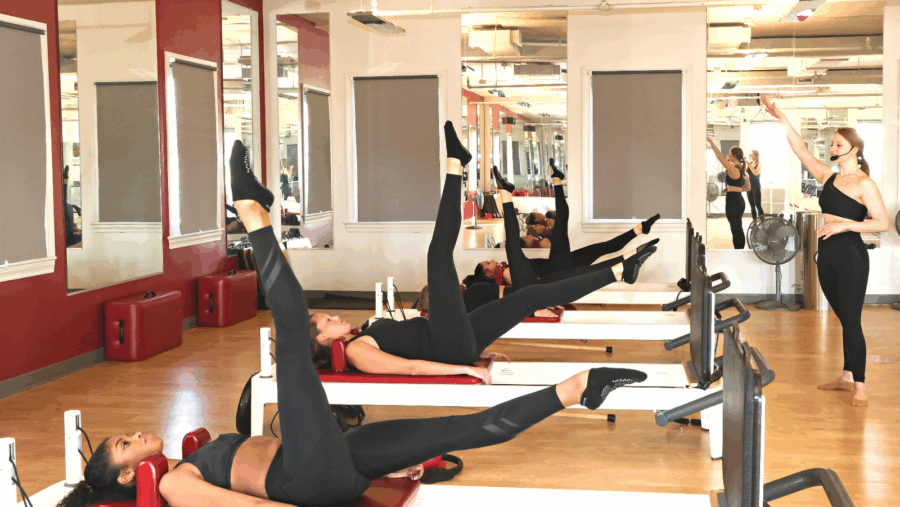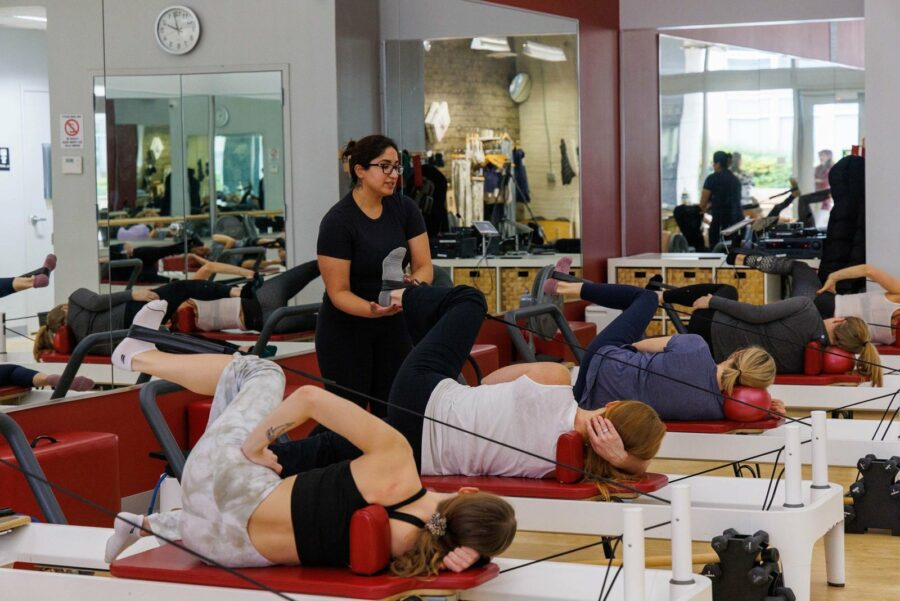 If you’ve suffered an injury, gone through surgery, or experience chronic pain, getting your body back to full strength may feel like an uphill battle. Physical therapy and Pilates classes each offer valuable tools for rehabilitation and beyond.
If you’ve suffered an injury, gone through surgery, or experience chronic pain, getting your body back to full strength may feel like an uphill battle. Physical therapy and Pilates classes each offer valuable tools for rehabilitation and beyond.
Understanding the complementary roles of physical therapy and Pilates can help you create a blended approach to recovery. Take a closer look at how Pilates works with physical therapy to create a comprehensive program.
The Role of Physical Therapy in Healing
Physical therapy is used as a rehabilitation process for the body. Working with a licensed physical therapist provides major recovery in those initial healing stages:
Targeted Exercises
A physical therapist will first evaluate your injury, mobility limitations, and muscular imbalances. Based on this comprehensive evaluation, they design a rehab program with targeted exercises to address your specific needs. This helps you regain range of motion and rebuild strength in compromised areas.
Hands-On Techniques
In addition to specific exercises, physical therapists also utilize soft tissue massage, joint mobilization, and other hands-on therapies. These techniques help relieve muscular tightness, reduce inflammation, and restore proper alignment.
Manual techniques complement prescribed exercises for a complete treatment approach.
Guidance From a Licensed Professional
Physical therapists complete years of specialized training to expertly guide patients through injury recovery. Working one-on-one with a qualified therapist ensures you perform rehab exercises correctly and safely, preventing further injury and upgrading exercises as your body heals.
With their expert knowledge, they will guide your timeline for integrating Pilates into your recovery.
Blending Pilates into Physical Therapy for Enhanced Recovery
One of the major tenets of Pilates is the focus on deliberate and controlled movements. Employing movements that are meticulous and purposeful enable you to better recognize limits, preventing setbacks and making it a beneficial part of physical therapy.
Several advantages you can expect when adding Pilates classes to a physical therapy program include:
Improved Core Strength
 Many orthopedic injuries and chronic pain conditions stem from poor core stability. Pilates focuses on strengthening the abdominals, back, pelvic floor, and glutes—the areas that comprise the powerhouse of your center.
Many orthopedic injuries and chronic pain conditions stem from poor core stability. Pilates focuses on strengthening the abdominals, back, pelvic floor, and glutes—the areas that comprise the powerhouse of your center.
Bolstering core fitness helps relieve strain on the back and overloaded joints.
Total Body Conditioning
While providing a deep core workout, Pilates also conditions the arms, legs, and other areas often diminished after injury or surgery. This well-rounded training accelerates a return to full-body strength required for everyday life.
The variety of exercises challenges different muscle groups so no area falls behind. The full-body experience of Pilates provides a contrast to physical therapy which typically focuses on one side of the body.
Body Awareness
As you connect breath with movement in a Pilates workout, you develop an enhanced mind-body connection. This helps you to better focus on your alignment and muscle balance. Pilates establishes body awareness that translates into smarter, safer movement in day-to-day activities.
Knowing When It’s Time to Transition From Physical Therapy to Pilates
Progressing from guided physical therapy to a Pilates regimen is a big step forward in your rehab journey. Your therapist will let you know when you are ready to transition, typically using the following signposts as guidelines:
- Your pain has decreased significantly
- You’ve regained close to normal range of motion
- Activities of daily living no longer aggravate injury issues
- You can tolerate set programs of exercise comfortably
Discuss your Pilates plans with your physical therapist to decide together when you’ve hit these key markers. They can then equip you with guidelines, limitations, or progressions to share with your Pilates instructor.
At RTR Pilates, we recommend starting with our Level 1 classes, which are perfect to ease you into the practice. In this way, you can build on the work you’re doing in physical therapy and boost your healing.
Continuing Your Gains With Ongoing Pilates
The benefits from regular Pilates classes really pay off. As a form of maintenance against future injury, RTR Pilates offers the perfect total body cross-training.
Incorporating Pilates into your regular fitness routine helps prevent additional injuries by enhancing your awareness of proper alignment, balanced muscle engagement, and controlled movement, reducing the risk of future injuries, especially those resulting from overuse or repetitive strain.
Another key benefit of Pilates, particularly at RTR Pilates, is its adaptability for individuals of all fitness levels.
Whether you’re a beginner looking for a gentle start or a seasoned athlete seeking a more challenging workout, RTR Pilates offers a variety of levels of difficulty that can accommodate your specific needs and fitness levels.
 Pilates provides comprehensive full-body conditioning, focusing on joint mobility, precise motor control, restorative flexibility, as well as core and muscular strength.
Pilates provides comprehensive full-body conditioning, focusing on joint mobility, precise motor control, restorative flexibility, as well as core and muscular strength.
This holistic approach to training promotes functional fitness, which in turn supports overall musculoskeletal balance and health, ultimately building real-world strength that can benefit you in various aspects of your life.
Continue Your Healing and Reduce the Risk of Future Injuries with RTR Pilates
RTR Pilates offers a wide range of Pilates classes and training suitable for all levels and goals, including rehabilitation and overall wellness. With the right combination of professional therapy and Pilates training, you can get back to pain-free movement.
Check out the complimentary 30 day membership at RTR Pilates today to learn how our diverse selection of Pilates classes can fit into your treatment plan!



